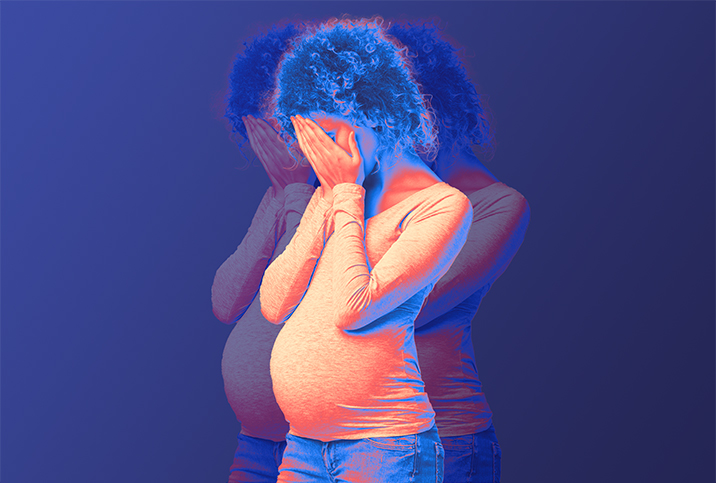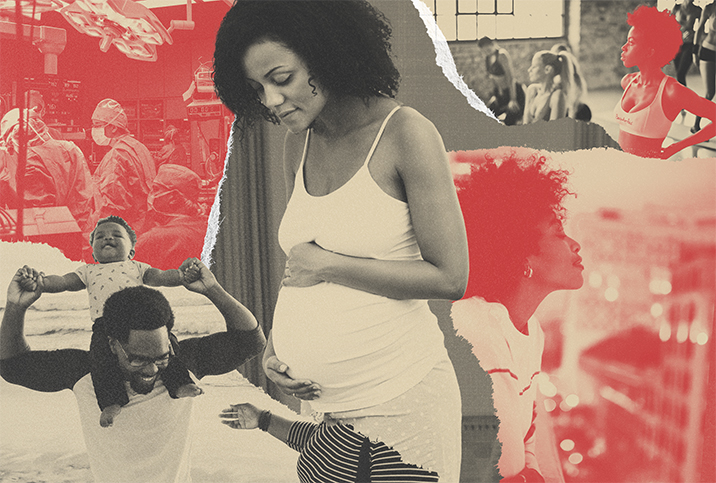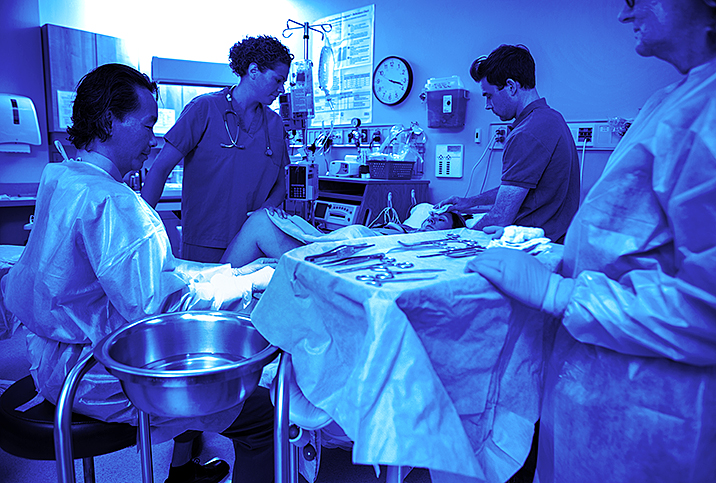We Need a Better Understanding of Tokophobia

When I was 6, after consistent begging, I finally got the VHS tape of a fantasy-themed TV show all my friends kept raving about. Set in some unspecified pagan medieval kingdom, it detailed the deeds of a princess who fought alongside knights and constantly had to conceal her identity. She was taught the way of the sword by a gender-bending entity known as the White Knight/the White Witch.
Yet the story opened in a less fabled way: In a dingy castle, the queen was about to give birth to her third child, generally hoped to be a male heir. She ultimately gives birth to a girl (the very same protagonist of the series), thus, enraging the king. When we're introduced to the queen, she is sallow, with sunken eyes, chapped lips and matted hair, her pain too intense for a scream. Of course, she ends up dying.
"It was sepsis," my grandma told 6-year-old me. "Women would often die in childbirth."
I was not struck by the "infection" part of sepsis. I was too small to understand what that was beyond the yellowish substance oozing from a bad cut. What really horrified me was the pain the queen conveyed, to the point that soon after, I started quizzing everyone I knew who had given birth. Even at a young age, I realized the answers were inconclusive.
27 years later, I still haven't gotten over it
Even though I did eventually evolve from strictly child-free to being a fence-sitter, I dread the time when I will have to make a definitive family-planning decision. I have a textbook case of tokophobia, which literally means "fear of childbirth" and, in many cases, pregnancy, too.
While the issue is as old as time, tokophobia was first documented in 2000 in the British Journal of Psychiatry, where authors Kristina Hofberg and Ian Brockington defined it as "an unreasoning dread of childbirth." Their aim was "to classify tokophobia for the first time in the medical literature" since they viewed it as a distressing psychological disorder that, verbatim, may be overlooked—shocker, I know.
"A general or mild fear of labor is not uncommonly discussed amongst women casually, however, severe forms of it are often not addressed," said Nidhee Sachdev, M.D., a board-certified and fellowship-trained reproductive endocrinology and infertility physician in California.
Tokophobia is still not present in the DSM-5
There's no official tokophobia diagnosis in the DSM-5, the Diagnostic and Statistical Manual of Mental Disorders, Fifth Edition, which helps healthcare providers determine and classify mental health disorders.
"It does, as the name suggests, fall most closely into the diagnosis of a phobia—an excessive and irrational fear—which is considered an anxiety disorder," said Melissa Weinberg, L.C.P.C., a Baltimore-based therapist specializing in perinatal mental health.
Tokophobia presents itself in two distinct forms. Primary tokophobia is fear of childbirth predating pregnancy. By contrast, secondary tokophobia occurs after a traumatic delivery, which can include fetal distress, pain and perineal tearing. It can also be a symptom of other underlying conditions, such as depression.
What's certain is that tokophobia is a widespread issue.
"About 20 to 78 percent of pregnant women report fears associated with the pregnancy and childbirth," Manjeet Singh Bhatia and Anurag Jhanjee wrote in "Tokophobia: A Dread of Pregnancy," published in 2012 in the Industrial Psychiatry Journal, citing numbers estimated around 2002 and 2003. "However, 13 percent of nongravid women report fear of childbirth sufficient to postpone or avoid pregnancy."
Fear of pregnancy and fear of childbirth are not necessarily the same thing, though.
"Although treatment may look the same depending on the person's goals, it's important to take a nuanced look at the fears a person is experiencing," said Weinberg, noting that specific fears include being trapped and out of control of one's own body, fear of pain or discomfort, or fear of a specific medical outcome. The source of the fear may influence a person's behavior or avoidance actions.
Should tokophobia be seen as a 'phobia' at all?
My personal fear of pain associated with pregnancy and childbirth led me down the r/childfree rabbit hole on Reddit. Among its community exceeding 1.4 million users, I saw that the term tokophobia is often invoked as a reason for people to choose a child-free lifestyle. In addition, I've seen the argument that tokophobia should not be seen as a pathological fear at all. That's something I wondered myself: Say I don't particularly like children and I am 100 percent sure I won't have any. Does my fear of the physical symptoms of pregnancy and childbirth even deserve any consideration since it has no repercussions on my life?
"The fear is not pathological. It's valid and realistic," argued user yesterdaysmakeup on TikTok. "If I told you I did not want to be a firefighter because I would not want to be burned alive, you'd get it. You would not call me pathological."
Weinberg agreed: "It makes sense that there would be an overlap between those struggling with tokophobia and those child-free by choice. If a person's decision to be child-free is aligned with their values and preferences in life, not based primarily on fear of pregnancy/childbirth, there is certainly nothing wrong with that."
Yes, you can have tokophobia and still want children
People with tokophobia do not necessarily avoid giving birth. Depending on their country of residence, a pregnant person can request an elective C-section, though it might not always be granted. People with the required resources can also opt for a gestational carrier.
"Gestational surrogacy is a way for patients with tokophobia to have a biological child without carrying and delivering, or undergoing childbirth, using assisted reproductive technology," Sachdev said. "With the ability to use a gestational carrier, thankfully, many patients have the ability to still build a family while seeking counseling or treatment for their tokophobia."


















